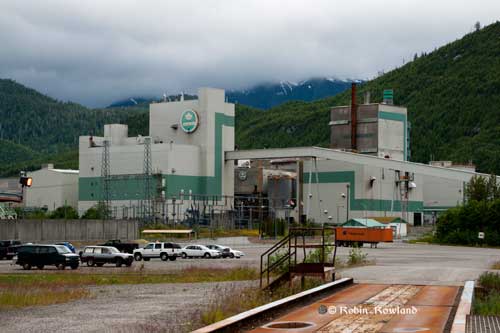Energy
The National Energy Board hearings into the application from KM LNG for an export licence to ship liquified natural gas to Asia through Kitimat wrapped up in Calgary Thursday, with the main participants expressing concerns over conditions on the licence proposed by the NEB.
The board panel reserved its decision. No date was given for a possible decision. Unlike the earlier hearings in June which were held in Kitimat, the Phase 2 hearings were held in Calgary and only available to residents of Kitimat by audio webcast
On July 6 and July 8, the board panel issued a list of 12 proposed conditions on the export licence. (The concerns of the Kitimat Rod and Gun were not among the 12. See story here)
Among the conditions the NEB wants to impose are a detailed reporting requirement that would include the name of the LNG tankers loading the natural gas, the quantity of gas and the revenue in Canadian dollars as well as the sales contracts KM LNG may sign with its Asian customers.
Those proposed conditions brought strenuous objections from the proponents of the project, voiced by lead counsel Gordon Nettleton and echoed by other lawyers, saying that the conditions could actually scuttle the entire project. That is because Asian buyers, whether private companies or sovereign (government) agencies, place much stricter emphasis on confidentiality of the agreements than in North America. The lawyers warned that the potential Asian customers could walk away from any deals in favour of less regulated vendors in other countries if the NEB insists on full disclosure, especially if the details could be made public either through the Access to Information Act or by NEB procedures and policies.
Nettleton and the other lawyers recommended a compromise where KM LNG would disclose to the board the total exports each quarter, the aggregate value in Canadian dollars for each quarter, the “heating value” of the aggregate and export totals by destination country.
The lawyers also objected strenuously to conditions proposed to cover environmental and social effects of building the Kitimat LNG terminal and the associated Pacific Trails pipeline.
These include filing a Marine Mammal Protection Plan and answer how KM LNG would react to any potential effects on marine mammals of the ships passing up and down Douglas Channel and the BC Coast.
One of the lawyers for the energy companies wondered why the board panel was interested in the shipping issues.”That’s what shps do, they use
existing shipping lanes,” he said. “Ships do not need permisson [now] to go up
Douglas Channel. [This issue] has been examined bythe appropraite
authorites arnd should be accepted by the board without conditions.”
Other conditions wanted reports on potential effects and probable mitigation efforts for marine mammals, birds, fish and fish habitat, “listed fish and wildlife species,” vessel wake, ballast and bilge water management, fisheries and “First Nations traditional use activities.”
The lawyers mainly objected on legal grounds, since under the hearings for an export licence, (unlike a facility hearing like the Enbridge Joint Review panel) the board is not supposed to be concerned about environmental issues. There were also long, legal arguments whether the pipelines from the shale gas fields to Kitimat where “directly connected” under the legal definition used in the Canadian energy industry. The lawyers also argued that the environmental and social issues addressed in the NEB’s proposed conditions would be covered in parallel investigations by other government agencies, such as a Transport Canada review of the shipping plans for Douglas Channel,
At the same time, all parties pledged that they would be “good corporate citizens” in their undertakings to work with the Haisla First Nation and other residents of the Kitimat region and to respect the local environment.
NEB proposed conditions 1 – 9
A33_-_Letter_to_All_Parties_Phase_II_Update_and_Possible_Licence_Conditions_-_A2A2V5.pdf
NEB proposed conditions 10 – 12
A34_-_Letter_-_Possible_Export_Licence_Conditions-Environment_and_Socio-Economic_Matters_-_A2A3T7_.pdf
 As reported in April by Alberta Oil
As reported in April by Alberta Oil 

 The closed Eurocan plant in Kitimat, the day it was sold, July 14, 2011. (Robin Rowland/Northwest Coast Energy News)
The closed Eurocan plant in Kitimat, the day it was sold, July 14, 2011. (Robin Rowland/Northwest Coast Energy News)